1. Panimula
Ductile iron vs stainless steel are two of the most widely used engineering materials across numerous industrial sectors.
From municipal water systems to chemical processing equipment, these materials support critical infrastructure and industrial productivity.
Selecting the right material can dramatically impact system performance, gastos, and lifecycle reliability.
This article offers a detailed and authoritative comparison of ductile iron and stainless steel, analyzing their mechanical, kemikal na, thermal, pang-ekonomiya, and environmental properties to guide informed material selection.
2. What Is Ductile Iron?
Ductile na bakal, kilala rin bilang nodular cast iron o spheroidal graphite iron (SG iron), is a type of cast iron. It differs fundamentally from traditional gray iron in its microstructure and mechanical performance.
While gray iron contains flake-shaped graphite that makes it brittle, ductile iron contains spherical (nodular) grapayt, which significantly enhances its toughness and ductility—hence the name ductile bakal.
The transformation of graphite shape from flakes to spheroids is achieved by adding a small amount of magnesium (typically 0.03–0.05%) or cerium during the casting process.
This crucial modification allows ductile iron to combine the advantages of castability and machinability with improved mechanical strength and impact resistance.
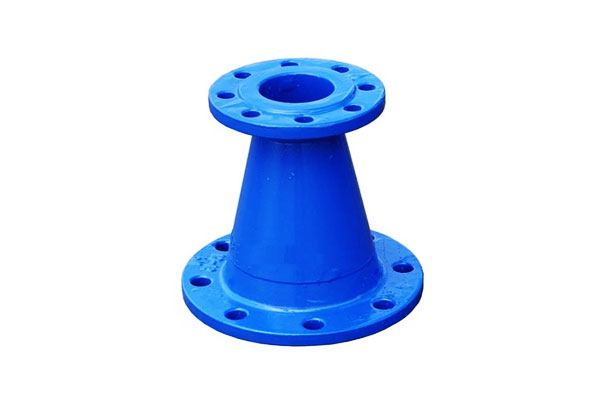
Microstructure and Composition
The typical chemical composition of ductile iron includes:
- Carbon: 3.2–3.6%
- Silicon: 2.2–2.8%
- Mga mangganeso: ≤0.5%
- Magnesium: 0.03–0.05%
- Sulfur & Posporus: Kept at low levels (≤0.02%)
The base matrix may vary:
- Ferritic ductile iron: More ductile, lower strength.
- Pearlitic ductile iron: Higher strength and wear resistance.
- Austempered Ductile Iron (ADI): Further heat-treated for superior performance (lakas ng paghatak > 1,200 MPa).
Advantages of Ductile Iron
- Excellent castability and machinability.
- Mataas na ratio ng lakas sa timbang.
- Gastos na epektibo para sa mataas na dami ng produksyon.
- Can absorb shocks and vibrations.
- Good performance under cyclic loading.
Typical Applications of Ductile Iron
Ang ductile iron ay malawakang ginagamit sa:
- Water and sewer piping systems.
- Mga bahagi ng sasakyan (mga crankshaft, Mga buko ng manibela).
- Agricultural and heavy machinery.
- Mga pabahay ng gear, Mga Katawan ng Bomba, and compressor cylinders.
- Municipal infrastructure (Mga takip ng manhole, Mga balbula, hydrants).
3. What Is Stainless Steel?
Hindi kinakalawang na asero is a corrosion-resistant alloy primarily composed of bakal (Fe), kromo (Cr), and varying amounts of nikel (Ni), carbon (C), and other alloying elements such as molibdenum (Mo), mangganeso (Mn), at nitrogen (N).
Its defining characteristic is the presence of hindi bababa sa 10.5% kromo, which forms a passive chromium oxide film on the surface, protecting it from rust and chemical attack.
Developed in the early 20th century, stainless steel has become essential in industries requiring high strength, kalinisan ng katawan, at paglaban sa kaagnasan, oksihenasyon, at init.
The material’s versatility, long service life, and recyclability make it one of the most widely used engineering materials today.
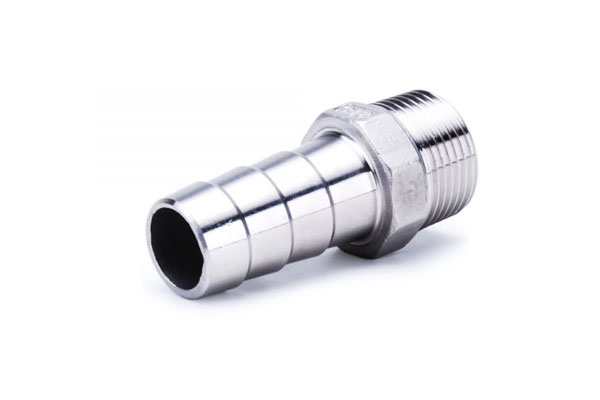
Stainless Steel Grades and Classifications
Stainless steels are generally categorized into five main families, each with distinct compositions and properties:
| Uri ng | Istraktura | Key Grades | Primary Features |
| Austenitic | FCC (Hindi magnetic) | 304, 316, 321, 310 | Napakahusay na paglaban sa kaagnasan, good weldability and formability |
| Ferritic | BCC (Magnetic) | 430, 409, 446 | Moderate corrosion resistance, matipid sa gastos, limited weldability |
| Martensitiko | BCT (Magnetic) | 410, 420, 440C | Mataas na katigasan, katamtamang paglaban sa kaagnasan, suitable for cutting tools |
| Duplex | Mixed (Austenite + Ferrite) | 2205, 2507 | Mataas na lakas, excellent stress corrosion cracking resistance |
| Pagtigas ng ulan (PH) | Variable | 17-4PH, 15-5PH | Mataas na lakas, mahusay na katigasan, Init na gamutin |
Advantages of Stainless Steel
- Outstanding corrosion and oxidation resistance.
- Excellent mechanical properties at both low and high temperatures.
- Hygienic surface—ideal for medical, pagkain, and pharmaceutical applications.
- High aesthetic appeal with various surface finishes (pinakintab na, nagsipilyo, atbp.).
- Long service life and 100% recyclability.
Typical Applications of Stainless Steel
Stainless steel is indispensable across industries such as:
- Pagkain at Inumin: Process tanks, cutlery, mga kagamitan sa kusina.
- Medikal na: Mga instrumento sa kirurhiko, mga implants, hospital equipment.
- Chemical and Petrochemical: Mga daluyan ng presyon, mga heat exchanger.
- Konstruksyon: Handrails, mga cladding, mga suportang istruktura.
- Marine: Boat fittings, mga istruktura sa malayo sa pampang, mga bomba.
- Enerhiya: Nuclear reactor components, wind turbine parts.
4. Mechanical Properties Comparison: Ductile Iron vs Stainless Steel
Selecting the appropriate engineering material requires a solid understanding of mechanical performance under service conditions.
Parehong ductile na bakal at hindi kinakalawang na asero offer strong mechanical properties, but they are suited for different stress environments, fatigue levels, and performance expectations.

Talahanayan ng Paghahambing: Mga Katangian ng Mekanikal
| Pag-aari | Ductile Iron 60-40-18 | Ductile Iron 100-70-03 | Hindi kinakalawang na asero 304 | Hindi kinakalawang na asero 316 |
| Lakas ng Paghatak (MPa) | 414 (60 ksi) | 690 (100 ksi) | 505–720 | 520–750 |
| Yield Lakas (MPa) | 276 (40 ksi) | 483 (70 ksi) | 215–290 | 240–300 |
| Pagpapahaba (%) | 18% | 3% | 40% | 30% |
| Ang katigasan ng ulo (Brinell, HBW) | 170–230 | 241–302 | 150–200 | 160–210 |
| Epekto ng Paglaban | Mataas na | Katamtaman | Napakataas na | Napakataas na |
| Lakas ng Pagkapagod (MPa) | 160–230 | 240–300 | 240–350 | 250–400 |
| Densidad ng katawan (g/cm³) | ~ 7.0 | ~ 7.1 | 7.9 | 8.0 |
| Thermal kondaktibiti (W/m·K) | ~ 50 | ~36 | ~ 16 | ~14 |
5. Corrosion Resistance of Ductile Iron vs Stainless Steel
- Hindi kinakalawang na asero: Forms a passive chromium oxide layer that resists oxidation and corrosion. 316 stainless is particularly resistant to chlorides and acidic environments.
- Ductile Iron: Susceptible to oxidation and galvanic corrosion; often protected using epoxy coatings, zinc linings, or cathodic protection.
6. Thermal and Chemical Resistance
Material selection for harsh environments depends heavily on thermal stability and chemical durability.
Ductile iron and stainless steel differ significantly in these aspects due to their compositions and microstructures.
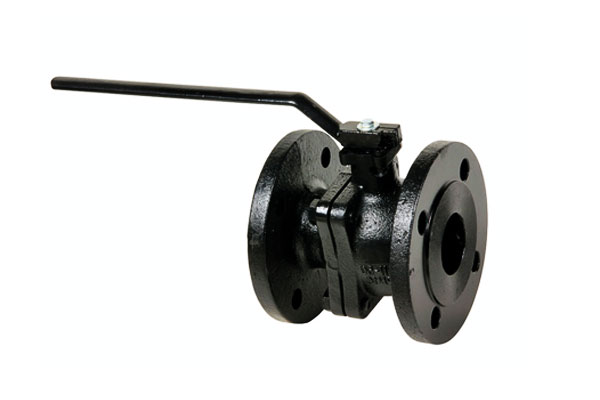
Thermal paglaban
| Aspeto | Ductile Iron | Hindi kinakalawang na asero (304 / 316) |
| High-Temperature Range | Up to 300–450°C for standard grades; heat-resistant grades (kasama si Mo, Ni) up to 600°C (hal., ASTM A476) | Napakahusay: 304 stable >600°C; oxidation resistance up to 870°C; 316 up to 900°C with Mo addition |
| Strength Retention at Elevated T | ~70% tensile strength at 300°C; ~50% at 400°C for 60-40-18 grade na ba | >500 MPa tensile strength at 600°C (304); 40% strength retention at 800°C (316) |
| Low-Temperature Behavior | Brittle below 0°C in standard grades; Ni-alloyed grades (80-55-06) maintain toughness (Charpy impact 27 J sa -40 ° C) | Austenitic stainless steels remain ductile at cryogenic temps (304 nananatili ang >40% elongation at -196°C) |
| Koepisyente ng Pagpapalawak ng Thermal (CTE) | Mababa ang: 11-12 × 10⁻⁶ /°C (20-100 ° C), Bawasan ang Thermal Stress | Mas Mataas: 304 ~17.3 × 10⁻⁶ /°C, 316 ~16.0 × 10⁻⁶ /°C; ferritic 430 mas mababa (10.4 × 10⁻⁶ /°C) but less ductile |
Paglaban sa Kemikal
| Chemical Medium | Ductile Iron | Hindi kinakalawang na asero (304 / 316) |
| Paglaban sa Acid | Poor uncoated (corrosion up to 2 mm/year in 5% H₂SO₄); coatings required (Epoxy, linings) | Excellent in dilute and concentrated acids (304 resists up to 65% HNO₃; 316 better with Mo for chlorides) |
| Alkali Resistance | Good in mild alkalis; forms protective iron hydroxide layer; stable at room temperature | Generally resistant; susceptible to caustic embrittlement in hot, concentrated alkalis (304/316); ferritic grades more resistant |
| Salt/Chloride Resistance | Corrodes in seawater (0.2–0.5 mm/year unprotected); requires protective coatings to reduce corrosion below 0.01 mm / taon | 304 resists mild chlorides but pits in seawater; 316 highly resistant to pitting in chloride environments (<0.005 mm / taon) |
7. Machinability and Castability of Ductile Iron vs Stainless Steel
The ability to shape, makina, and join materials is critical in manufacturing, directly impacting production efficiency, Bahagi ng pagiging kumplikado, and overall costs.
Katatagan: Shaping Complexity and Efficiency
Castability refers to a material’s ability to fill molds uniformly, solidify without defects (hal., porosity, pag urong), and retain dimensional accuracy during cooling.
This property is particularly vital for producing complex, near-net-shape parts, where casting reduces the need for extensive post-processing.
Ductile Iron: A Casting Workhorse
Ductile iron is inherently a cast material, optimized for casting processes. Its castability is exceptional due to:
- Mababang punto ng pagtunaw: Ductile iron melts at 1,150–1,200°C, significantly lower than stainless steel (1,400–1,530°C).
This reduces energy consumption during melting and simplifies mold design, as lower temperatures minimize thermal stress on molds (hal., sand or investment molds). - Mataas na likido: The molten form of ductile iron flows easily into intricate mold cavities, making it ideal for complex geometries—such as gear housings, mga katawan ng balbula, or pump impellers with thin walls or internal channels.
- Controlled solidification: Ductile iron’s graphite nodules (formed via magnesium or cerium treatment) reduce shrinkage during cooling compared to gray iron, lowering the risk of cracks or porosity.
This allows for consistent production of large, thick-walled components (hal., pipe flanges up to 2 meters in diameter) na may minimal na mga depekto.
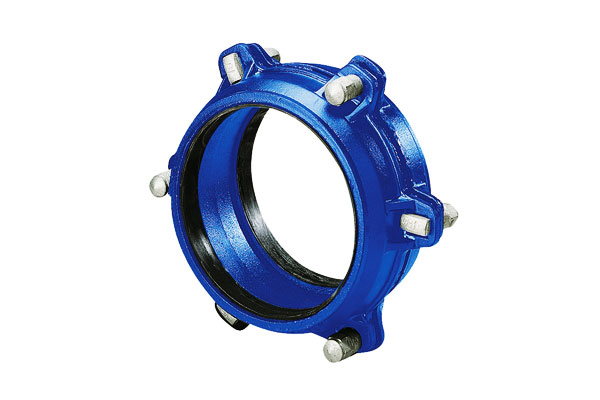
Karaniwan casting methods for ductile iron include sand casting (80% of production), pamumuhunan paghahagis, and centrifugal casting (for pipes).
ASTM A536, the primary standard for ductile iron, specifies grades (hal., 60-40-18, 80-55-06) optimized for castability across applications.
Hindi kinakalawang na asero: Casting Challenges and Specialized Grades
Stainless steel is less inherently castable than ductile iron, but advancements in casting technology have expanded its use in complex parts. Its challenges stem from:
- Mataas na punto ng pagtunaw: The high temperature required to melt stainless steel (1,400–1,530°C) increases energy costs and demands heat-resistant molds (hal., ceramic or refractory-lined molds), raising tooling expenses.
- Oxidation risk: Molten stainless steel is prone to oxidation, which can introduce inclusions (oxide particles) in the final part, weakening its structure.
This requires inert gas shielding (hal., argon) sa panahon ng paghahagis, adding process complexity. - Shrinkage and porosity: Stainless steel’s solidification range is wider than ductile iron, increasing shrinkage and porosity risks.
This necessitates precise mold design (hal., risers to feed molten metal during cooling) and tighter process controls.
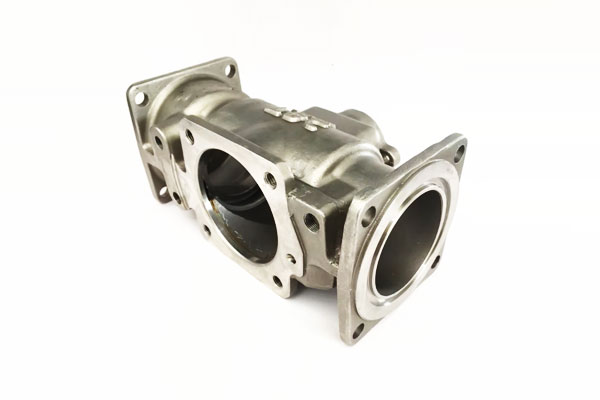
Despite these challenges, cast stainless steel grades (hal., ASTM A351 CF8, CF3, CF8M) are engineered for improved castability. Halimbawa na lang:
- CF8 (equivalent to wrought 304) and CF3 (304L) are austenitic cast grades with low carbon content, reducing carbide precipitation and improving fluidity.
- CF8M (316 equivalent) includes molybdenum for enhanced corrosion resistance, with castability optimized for chemical processing components (hal., mga katawan ng balbula).
Casting methods for stainless steel include pamumuhunan paghahagis (for high-precision parts like medical instruments) at buhangin paghahagis (for larger components like pump casings).
Gayunpaman, cast stainless steel typically requires more post-casting machining than ductile iron to achieve tight tolerances.
Machinability: Ease of Cutting and Tool Wear
Machinability refers to how easily a material can be cut, nabutas na ang butas, or shaped with machine tools, measured by factors like tool life, bilis ng pagputol, at ibabaw tapusin. It directly impacts production time and tooling costs.
Ductile Iron: Superior Machinability
Ductile iron is renowned for excellent machinability, outperforming most stainless steels. Key reasons include:
- Graphite lubrication: Graphite nodules in ductile iron act as internal lubricants during cutting, reducing friction between the tool and workpiece.
This lowers tool wear and allows higher cutting speeds (hanggang sa 200 m/min for medium-carbon grades). - Low work hardening: Hindi tulad ng hindi kinakalawang na asero, ductile iron does not harden significantly under mechanical stress during machining, preventing “galling” (material transfer to the tool) and maintaining consistent cutting forces.
- Favorable chip formation: Ductile iron produces short, brittle chips that break away easily, reducing the need for chip removal systems and minimizing surface damage to the workpiece.
Machinability indices (relative to 1018 carbon steel = 100) for ductile iron range from 70–90, Depende sa grado. Halimbawa na lang:
- ASTM A536 grade 60-40-18 (lakas ng paghatak 414 MPa) has a machinability index of ~85.
- Higher-strength grades (hal., 120-90-02) have slightly lower indices (~70) due to increased hardness but still outperform most stainless steels.
Hindi kinakalawang na asero: Machinability Challenges
Stainless steel’s machinability varies by grade but is generally poorer than ductile iron, Hinihimok ng:
- High work hardening: Austenitic hindi kinakalawang na asero (hal., 304, 316) harden rapidly when cut, forming a tough, wear-resistant layer at the tool-workpiece interface.
This increases cutting forces and tool wear, limiting cutting speeds (typically 50–100 m/min for 304). - Low thermal conductivity: Stainless steel conducts heat poorly, trapping heat at the tool tip and causing premature tool failure (hal., carbide tooling overheats and degrades).
- Tough chips: Austenitic grades produce long, stringy chips that wrap around tools, requiring specialized chip breakers and coolant systems to prevent jamming.
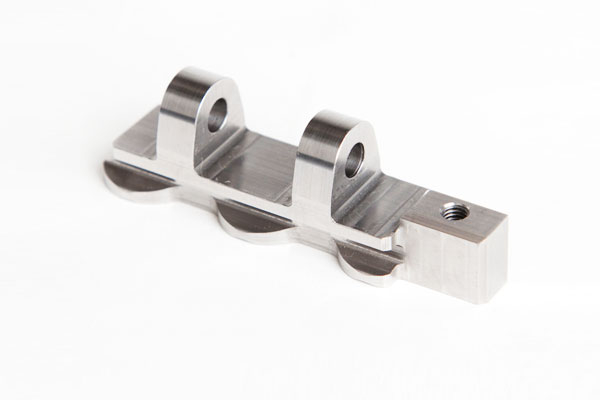
Machinability indices reflect these challenges:
- AISI 304 has a machinability index of ~40 (mga bes. 1018 bakal na bakal), habang ang 316 (with molybdenum) is even lower (~ 30).
- Ferritic hindi kinakalawang na asero (hal., 430) perform better (~60) due to lower nickel content, but still lag behind ductile iron.
Tooling costs for stainless steel are 2–3x higher than for ductile iron, as carbide or ceramic tools (rather than high-speed steel) are required to withstand heat and abrasion.
Weldability: Joining Materials Securely
Weldability determines how easily a material can be joined via welding without cracking, porosity, or loss of mechanical properties.
Ductile Iron: Mga Hamon sa Welding
Ductile iron is notoriously difficult to weld due to its high carbon content (2.5–4.0%) and graphite structure:
- Carbon migration: Sa panahon ng hinang, carbon can diffuse into the heat-affected zone (HAZ), forming brittle martensite, which causes cracking.
- Graphite oxidation: High temperatures can oxidize graphite to CO/CO₂, creating porosity in the weld.
Successful welding of ductile iron requires preheating (200–400°C) to slow cooling, post weld heat treatment (500-600 ° C) to temper martensite, and specialized filler metals (hal., nickel-based alloys like ENiFe-C1).
Even with these steps, welds often have lower fatigue strength than the base material, limiting their use in high-stress applications (hal., mga bahagi ng istruktura).
Hindi kinakalawang na asero: Mahusay na Weldability
Hindi kinakalawang na asero, particularly austenitic grades, is highly weldable:
- Mga marka ng Austenitic (304, 316): Their low carbon content (≤0.08% for 304; ≤0.03% for 304L) and nickel stabilization prevent martensite formation in the HAZ.
TIG (tungsten inert gas) or MIG (metal na hindi gumagalaw na gas) welding produces strong, ductile welds with minimal cracking. - Controlled atmosphere: Inert gas shielding (argon) prevents oxidation of chromium, preserving the passive layer (critical for corrosion resistance).
Welded stainless steel retains ~80–90% of the base material’s tensile strength, paggawa ng angkop para sa mga istruktura application (hal., Kagamitan sa Pagpoproseso ng Pagkain, marine hulls).
Martensitic hindi kinakalawang na asero (hal., 410) are less weldable due to hardening, but preheating and tempering mitigate risks.
Processing Costs: Paghahagis, Machining, and Welding
Processing costs favor ductile iron in most scenarios:
- Casting costs: Ductile iron casting is 30–50% cheaper than stainless steel casting, due to lower energy use, simpler molds, and fewer defect-related reworks.
Halimbawa na lang, a 10kg valve body costs ~$20–$30 for ductile iron vs. $40–$60 for cast stainless steel (CF8). - Machining costs: Ductile iron machining is 20–40% less expensive than stainless steel, as longer tool life (carbide tools last 2–3x longer) and faster cutting speeds reduce labor and tooling expenses.
- Welding costs: Ductile iron welding is 2–3x costlier than stainless steel welding, due to pre/post-heat treatment and specialized labor.
Gayunpaman, this is offset by ductile iron’s lower casting and machining costs in most applications.
8. Cost and Availability of Ductile Iron vs Stainless Steel

Raw Material and Production Costs
- Ductile Iron benefits from lower raw material costs due to abundant iron ore and simpler alloying elements (mainly carbon and magnesium).
Its lower melting point (1,150–1,200°C) reduces energy consumption during melting and casting, leading to cost-effective production. - Hindi kinakalawang na asero, composed primarily of iron, kromo, nikel, at molibdenum, has higher raw material costs driven by expensive alloying elements.
Its higher melting point (1,400–1,530°C) increases energy requirements, and more complex processing (hal., controlled atmospheres, refractory molds) further raise production costs.
Lifecycle and Maintenance Costs
- Ductile Iron often has a lower initial cost but may incur higher maintenance expenses in corrosive environments due to required coatings or linings to prevent rust and degradation.
- Hindi kinakalawang na asero commands a higher upfront price but offers superior corrosion resistance and longer service life, reducing maintenance frequency and associated costs, which can justify the initial investment in many applications.
Availability and Supply Chain Factors
- Ductile Iron enjoys widespread availability globally, with mature foundry industries capable of producing a broad range of grades and component sizes.
Lead times are generally short, and the supply chain is well established. - Hindi kinakalawang na asero is also widely available, but the supply chain can be affected by fluctuations in global nickel and chromium markets, which impact pricing and lead times.
Specialized grades may require longer procurement times due to lower production volumes.
9. Mga Pamantayan at Pagtutukoy
Ductile Iron Standards
- ASTM A536: The primary standard specifying the mechanical properties, komposisyon ng kemikal, and testing methods for ductile iron castings.
Kabilang sa mga karaniwang grado ang 60-40-18, 80-55-06, at 100-70-03, defining tensile strength, magbunga ng lakas, and elongation requirements. - ISO 1083: International standard for spheroidal graphite cast irons (ductile na bakal), detailing grades and mechanical properties.
- EN 1563: European standard covering ductile iron castings with specified quality and testing protocols.
Stainless Steel Standards
- ASTM A240: Covers chromium and chromium-nickel stainless steel plate, Sheet, and strip for pressure vessels and general applications; includes grades 304, 316, and others.
- ASTM A276: Specifies stainless steel bars and shapes used in manufacturing.
- ASTM A351: Standard for cast stainless steel grades, including CF8 (304 equivalent) and CF8M (316 equivalent), used in valves, mga bomba, at mga fitting.
- ISO 15510: Specifies chemical composition for stainless steels internationally.
- EN 10088: European standard for stainless steel chemical composition and mechanical properties.
10. Buod ng Talahanayan ng Paghahambing
| Pag-aari / Tampok | Ductile Iron | Hindi kinakalawang na asero |
| Lakas ng Mekanikal | Lakas ng paghatak: 400–700 MPa | Lakas ng paghatak: 520–750 MPa |
| Ductility | Katamtaman (Elongation 10–18%) | Mataas na (Elongation 40–60%) |
| Paglaban sa kaagnasan | Katamtaman; requires coatings for harsh media | Napakahusay; inherent corrosion resistance |
| Thermal paglaban | Service temp up to 450°C (standard grades) | Mataas na; up to 900°C for 316 grade na ba |
| Machinability | Napakahusay; graphite acts as lubricant | Moderate to poor; work hardening issues |
| Katatagan | Napakahusay; mababang punto ng pagkatunaw, magandang likido | Mabuti na lang; mas mataas na punto ng pagtunaw, oxidation risk |
| Weldability | Mahirap; requires pre/post heat treatment | Napakahusay; easy welding with inert gas |
| Gastos (Materyal & Pagproseso) | Lower initial and machining costs | Higher initial and machining costs |
| Mga Aplikasyon | Mga tubo, mga bahagi ng sasakyan, Mga pabahay ng pump | Food processing, kemikal na, marine, medikal na |
| Mga Pamantayan | ASTM A536, ISO 1083, EN 1563 | ASTM A240, A351, ISO 15510, EN 10088 |
| Recyclability & Sustainability | High recyclability; moderate energy for melting | High recyclability; higher energy intensity |
11. Pangwakas na Salita
Both ductile iron vs stainless steel are foundational materials in modern engineering. Ductile na bakal is cost-effective, malakas na, and ideal for large-scale castings and infrastructure.
Hindi kinakalawang na asero offers superior corrosion resistance, aesthetic finish, and hygiene, making it suitable for critical environments where durability and cleanliness are paramount.
Material selection should be based on operational conditions, cost objectives, regulatory requirements, and lifecycle expectations.
Each material excels in different domains, and engineers must balance performance with practicality.
Mga FAQ
Can ductile iron replace stainless steel in seawater?
Hindi. Uncoated ductile iron corrodes at 0.3–0.5 mm/year in seawater, lasting <5 mga taon. 316 stainless steel lasts 30+ years uncoated.
Is stainless steel stronger than ductile iron?
Stainless steel has higher tensile strength (515 MPa vs. 414 MPa), but ductile iron offers higher yield strength (276 MPa vs. 205 MPa), making it better for static loads.
Which is more cost-effective for water pipes?
Ductile na bakal (raw cost $1.5–2.5/kg) ay 50% cheaper than 304 stainless steel for freshwater pipes, though 316 is better for coastal areas with saltwater exposure.
Can ductile iron be welded?
Oo nga, but requires preheating (200–300°C) and specialized electrodes to avoid cracking. Welded joints have 50–70% of the base metal’s strength.


